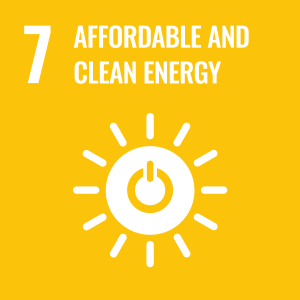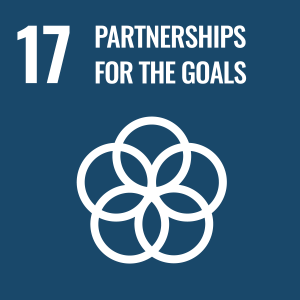
Dr Peter Bryant
About
Biography
I am a Chartered Radiation Protection Professional (CRadP) and Radioactive Waste Adviser (RWA) with 10 years’ experience in the Nuclear and Contaminated Land industries. Much of my career has been spent working in consultancy on a variety of projects in the UK and abroad, prior to joining EDF Nuclear New Build, as a Decommissioning and Radiological Specialist. I currently provide technical leadership and support to the Hinkley Point C and Sizewell C projects, along with being appointed as the company’s RWA.
During my time working in consultancy I was a Business Leader, Line Manager and Technical Consultant. This included previously holding Commercial and Operational roles for a Nuclear Business Unit with a Profit and Loss of £8 Million.
I was also responsible for the formation and development of a number of new capability areas within various companies including Radiological Protection & Radioactive Waste Management Capabilities.
In addition I actively support a number of Universities and Professional Bodies, this includes being appointed as an Honorary Recognised Teacher at the University of Liverpool, Associate Tutor and Member of the Postgraduate Advisory Board at the University of Surrey and an Industry Lecturer at the University of Bath. I am also President Elect of the UK's Chartered Society for Radiological Protection (SRP).
Areas of specialism
University roles and responsibilities
- Teaching on the Department of Physics MSc Programmes
- Member of the Department of Physics Postgraduate Advisory Board
My qualifications
Previous roles
Business, industry and community links
ResearchResearch projects
I am actively involved in contributing to the IRPA work stream on ALARA. My particular area of contribution has been around the integration of Radiological and Conventional Hazards into a combined risk assessment and holistic ALARA / ALARP demonstration.
Research and development into novel dose assessment techniques in support of risk assessments and other regulatory submissions. This has included the development of methodologies for assessing the chemo-toxicity of various enrichments of Uranium from direct radiological measurements and assessing doses associated with "skyshine" from radioactive waste stores.
Research into Nuclear and Radiological Safety Competency Systems and Culture Development for both Nuclear Site Licensees and Supply Chain Organisations (e.g. Design Houses, EPCs and Consultancies). This includes the demonstration Suitably Qualified and Experienced Personal (SQEP), embedding of Nuclear / Radiation Safety Culture into the supply chain and integrating of international radiation protection cultures.
Development of Radioactive Waste Treatment Technologies for problematic waste streams such as Contaminated Oils and Graphite. My particular expertise relates to demonstrating the feasibility of applying new technologies in a nuclear licensing and permitting regime. I am additionally experienced in the field of Radiation Detection, Characterisation and Source Term Development.
Indicators of esteem
Recipient of the Society for Radiological Protections Founders Medal for my contribution to the field of Radiation Protection.
Keynote Speaker at various International and National Conferences and Workshops including IRPA, SRP and the Westminster Energy, Environment & Transport Forum.
Research projects
I am actively involved in contributing to the IRPA work stream on ALARA. My particular area of contribution has been around the integration of Radiological and Conventional Hazards into a combined risk assessment and holistic ALARA / ALARP demonstration.
Research and development into novel dose assessment techniques in support of risk assessments and other regulatory submissions. This has included the development of methodologies for assessing the chemo-toxicity of various enrichments of Uranium from direct radiological measurements and assessing doses associated with "skyshine" from radioactive waste stores.
Research into Nuclear and Radiological Safety Competency Systems and Culture Development for both Nuclear Site Licensees and Supply Chain Organisations (e.g. Design Houses, EPCs and Consultancies). This includes the demonstration Suitably Qualified and Experienced Personal (SQEP), embedding of Nuclear / Radiation Safety Culture into the supply chain and integrating of international radiation protection cultures.
Development of Radioactive Waste Treatment Technologies for problematic waste streams such as Contaminated Oils and Graphite. My particular expertise relates to demonstrating the feasibility of applying new technologies in a nuclear licensing and permitting regime. I am additionally experienced in the field of Radiation Detection, Characterisation and Source Term Development.
Indicators of esteem
Recipient of the Society for Radiological Protections Founders Medal for my contribution to the field of Radiation Protection.
Keynote Speaker at various International and National Conferences and Workshops including IRPA, SRP and the Westminster Energy, Environment & Transport Forum.
Sustainable development goals
My research interests are related to the following:






Publications
The film formation of an acrylate latex with a glass-transition temperature of 38 °C has been achieved through the use of near-infrared (NIR) radiative heating. A hard, crack-free coating was obtained without the addition of plasticizers. Sintering of acrylate particles was confirmed through measurements using atomic force microscopy. The addition of an NIR-absorbing polymer increased the rate of particle deformation such that it was significantly greater than obtained in a convection oven at 60 °C. The results are consistent with a lower polymer viscosity under infrared radiation, according to a simple analysis using a standard model of sintering.
The electrical characteristics and fast neutron response of a High Temperature Chemical Vapour Deposition (HTCVD) grown semi-insulating bulk SiC wafer has been measured. Current-Voltage measurements demonstrated a low leakage current in the region of 10-10 to 10-12v A with a bulk resistivity of at least 1012-1013 Ω.cm. Alpha particle spectroscopy measurements demonstrated an electron charge collection efficiency of up to 90% with reasonable reproducibility of the acquired spectra. Evidence of (incident particle) rate dependent polarisation was seen following a constant applied bias combined with alpha irradiation over a period of time (order of tens of minutes). The ability of the wafer to detect fast neutrons was demonstrated and a comparison drawn with the MCNPX simulated response of a bulk SiC device. Comparing the MCNPX simulated response of a bulk SiC device to that of a silicon device suggests a superior ability to detect fast neutrons with an intrinsic efficiency 1.7 times that of silicon.
The occupational risks associated with the chemical toxicity of uranium can be overlooked during the processing, handling and storage of the material, as the radioactivity of the material is often used alone to assess the health consequences of exposure to uranium compounds. This note provides a summary of the current United Kingdom occupational standards for uranium based on radiation dose and/or chemical toxicity with a particular focus on intake via inhalation. A simple model is subsequently presented to allow a comparison to be drawn between the occupational exposure standard for chemical toxicity and radiological dose limit. Using these data a set of suggested limits on occupational exposure to airborne uranium is proposed that indicate where the legal annual radiological dose limit for workers or the Health and Safety Executive occupational exposure standard for chemical toxicity are at risk of being breached.
The UK nuclear industry is suffering heightened concerns of a skills gap. This has led to companies, and in particular consultancies recruiting increasing numbers of graduates and less experienced staff. The following paper provides an overview of an approach to developing a radiation protection based competency framework within a consultancy with the aim of supporting the identification of the required initiatives to support the development of staff, their careers, and the profession. It is hoped this will provide useful guidance for organisations that are embarking on establishing a training and development programme.
When developing radioactive waste stores, due consideration has to be given to the hazard associated with the storage of the radioactive material. The walls of the stores are normally designed to provide a sufficient level of shielding so as to reduce the external dose rate to a sufficiently low level. However, the roofs of such waste stores are typically made relatively thin. Over the last few years concerns have been raised that gamma radiation escaping from the roofs of these buildings may reflect off the atmosphere, a phenomenon commonly known as skyshine. This may result in a radiation exposure pathway and increased dose to member of the public. A simple ‘hand calculation’ model, based on NCRP (National Council on Radiation Protection and Measurements) Report No 151, was created to calculate this skyshine dose, alongside a Monte Carlo N-Particle (MCNP) program. The models were run for two example inventories over a variety of distances, both initially and 15 years after emplacement. It was found that the simple calculation consistently underestimated skyshine dose by approximately 2 orders of magnitude when compared to the MCNP simulation. This difference was attributed to inherent differences in the way the two models treated scattering effects, which the hand calculation model made no attempt to consider. It was therefore concluded that the hand calculation may not provide a suitably conservative estimate of skyshine dose from radioactive waste stores and care should be taken when using this method for assessing the suitability of the design of the store.
Across the world we are seeing a resurgence in Nuclear New Build with a current estimated 160 new reactors planned for construction and an additional 300 proposed. In the UK alone plans are under way for the construction of 10 new reactors, using 4 different reactor designs (EPR, ABWR, AP1000 and HL1000) all of which are to be provided by foreign vendors. These reactors are to be operated by 3 newly formed licensees within the UK, majority of which are owned by joint ventures, and funded by foreign investors. As these new licensees and future operators embark on the task of establishing themselves and progressing the design and build of these new reactors there are challenges faced in integrating the Radiation Protection Requirements, Culture and Ethos from the various Foreign Investors and Vendors (including France, China, Japan and America) into the UK “Context”. Due credit needs to be taken not only for the regulatory regime of the foreign countries where these reactors originate, but also for the stage in the design development of the reactors, noting they are not being designed from a blank p iece of paper, but are rather an existing design which are to be assessed for suitability for licensing, build and operability under the UK Regulatory Regime. Where shortfalls are identified, a proportionate solution needs to be introduced and agreed to resolve any regulatory issues and allow continuation in the design and build process in a cost effective manner, whilst ensuring the risks are adequately controlled and reduced to As Low As Reasonably Practicable (ALARP).
Across the world, we are seeing a resurgence in Nuclear New Build. In the UK alone, plans are under way for the construction of 10 new reactors, using 4 different reactor designs all of which are to be provided by foreign vendors, and operated by 3 newly formed licensees within the UK. As these new licensees embark on the task of establishing themselves and progressing the design and build of these reactors, there are challenges faced in integrating the Radiation Protection Requirements and Culture from the various Foreign Investors and Vendors into the UK ‘Context’. The following paper identifies the origin of the Radiation Protection Requirements within the UK and foreign investor/vendor countries, in an attempt to integrate them into the UK licensing and approval process. Thus, allowing due credit to be taken for the regulatory regime of the foreign countries where these reactors originate.
The principle of As Low As Reasonable Achievable (ALARA) stems from the field of radiological protection. In the UK, this principle has been incorporated into the Health and Safety at Work Act 1974 and rather than applying solely to radiological hazards, applies to all hazards in totality. Given that the current methods for assessing hazards are somewhat isolated, in that one hazard is assessed independently of another, it can be challenging to ensure a truly holistic view of the risks, and demonstrate they have been reduced to ALARA or As Low As Is Reasonably Practicable (ALARP) as required in the UK regulatory regime. The following paper presents a proposed framework for the integrated assessment of risks from multiple hazards. In addition, it presents an overview of some of the key challenges that may be encountered when producing a holistic ALARA demonstration.